
I’m having the greek salad, about as authentic as it gets where I am in the beautiful, rural foothills of the White Mountains on the island of Crete, Greece.
I watch the regulars start filing into the tavern in the early afternoon, spicing the air with their husky voices, breaking the stillness of morning with lively, spirited talk of whatever old Greeks talk about with time on their hands.
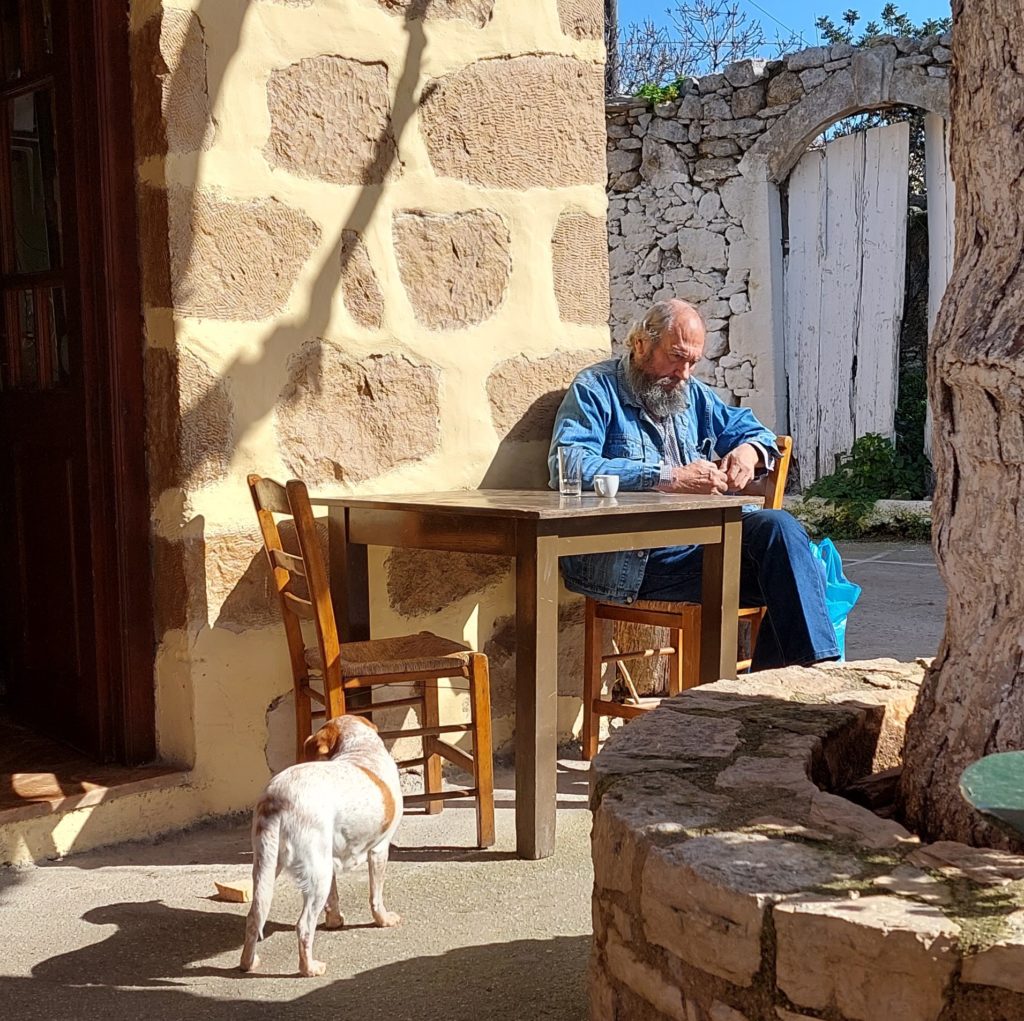
Dris Taverna shares a driveway with the 13th century Church of Ayios Nikolaos, where the faithful still worship in this village of Maza.
A couple of young men on a motorcycle roared annoyingly out of the parking lot between the church and tavern but stalled in the street, drawing a few moment’s worth of full-throated laughter from the clientele.
This is my third day on my second visit to Western Crete.
My flight from Tbilisi, Georgia, to Crete, following a seven-hour bus ride from Batumi, Georgia, was exhausting. That will be the last time I plan an overnight in an airport. Even in business class with lounge access in Tbilisi airport, at the end of this excursion I was a stumbling zombie.
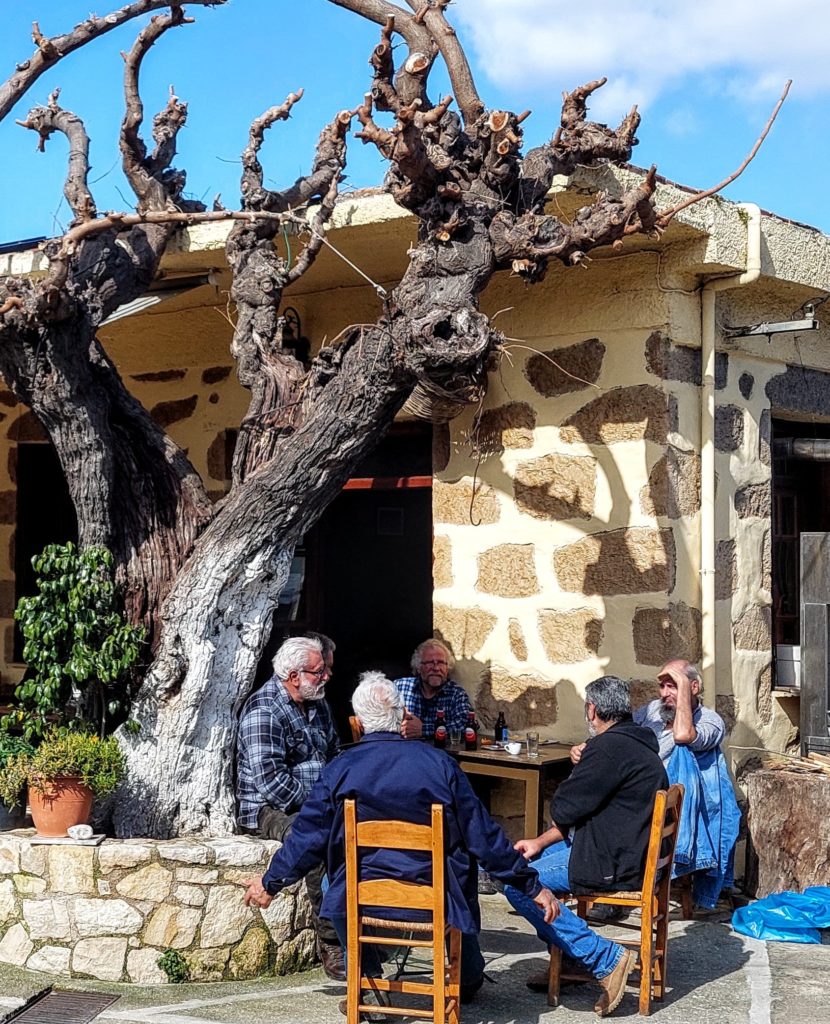
My first two days in Greece were spent catching my body up from serious sleep deficit syndrome. Funny, I remember when an all-nighter was not such a problem. A few extra years though, at an age when another year really means something, has thoroughly dismantled that memory.
It was cold in Greece the first couple of days, but it was warm this day at Dris Taverna in the village of Maza. At 35 minutes past noon, the sun’s warm, slanted rays skimmed the earth from low in the winter sky and slipped cleanly under the cover of the tavern’s outdoor terrace, where the Tavern’s patrons started arriving to while away their time with strong Greek coffee, even stronger raki, the traditional alcoholic drink of Crete, and the owner’s excellent handcrafted house wine.
I spent close to three months in Filippos two years ago when I was housesitting a villa with a dog and cat for two months. It was around this same time of the year.
This time, by my third day on the island, all the good feelings of Greece I’d harbored since my first visit were returning to rejuvenate my wilted spirit under the influence of a brilliant sky and the pure scenic splendor of rural Crete.
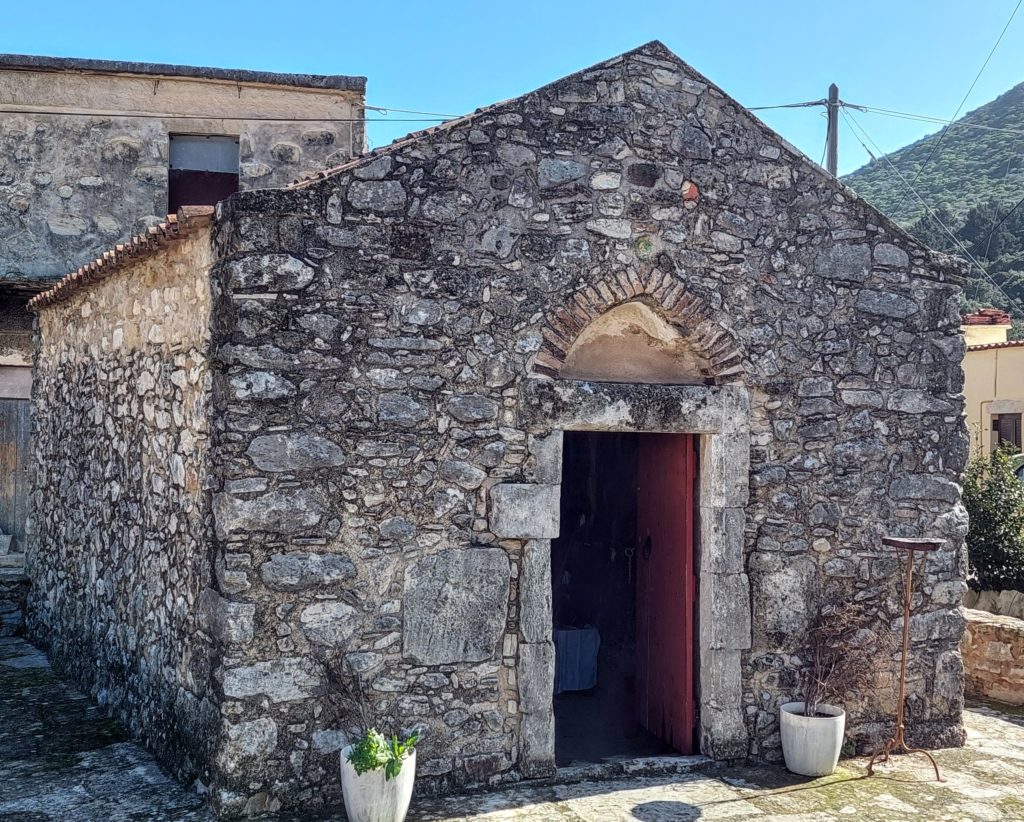
I came to visit my friend Annie, and others I knew here from my previous visit, even the familiar dogs along my old walking route who seemed to remember me, barking now with some hesitation and puzzlement in their recognition of my return.
The crusty old goat keeper of Vrisses was still leading his herds up and down the quiet, woodsy rural roads and paths in these foothills that roll out below the snow-capped White Mountains that have towered over this region since before the legendary gods of Olympus ruled Greece.
I walked in sheer joy along the route I traveled daily with the wonderful dog I had charge of when housesitting.
But on this second trip, I took a turn I never made during my first journeys on Crete. Annie, a Belgian expat, who I met last time here while walking our dogs on these same roads, recommended I go to Maza, down a road I’d never walked. She said it led to an old church standing next to a traditional Greek family-run tavern where I might get a drink and a bite to eat.
So I went.
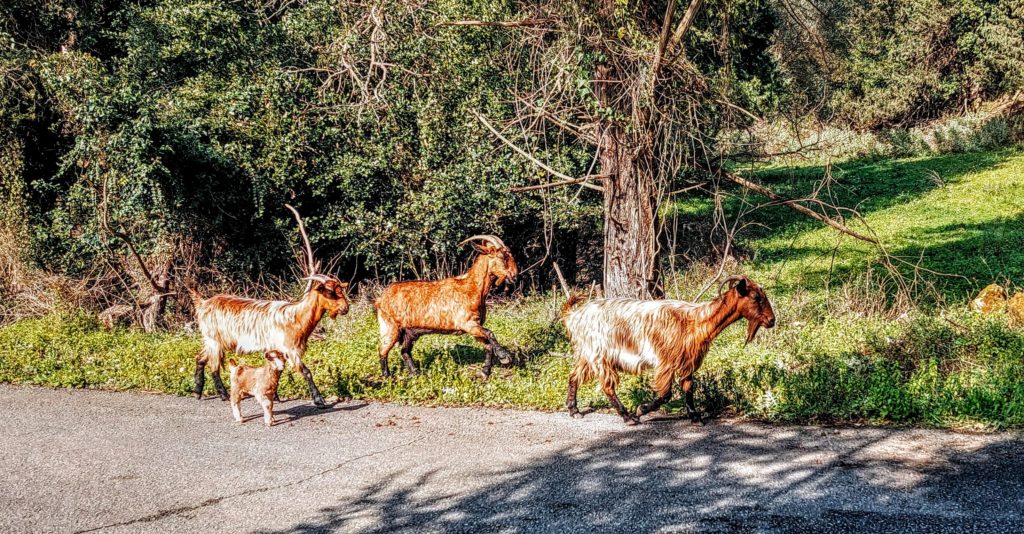
The Church of Ayios Nikolaos, a sturdy stone structure, is smaller than a two-car garage and still used by the faithful for individual prayer, though only occasionally for congregational services due to its size.
From the outside, it’s an old stone building with little to distinguish it from many others. But step inside — it’s usually open — and you might be amazed.
The interior walls are stunningly decorated with murals, frescos and religious iconography created by the celebrated 13th century hagiographer of western Crete, Ioannis Pagomenos, who legend says was buried beneath the floor of the church.
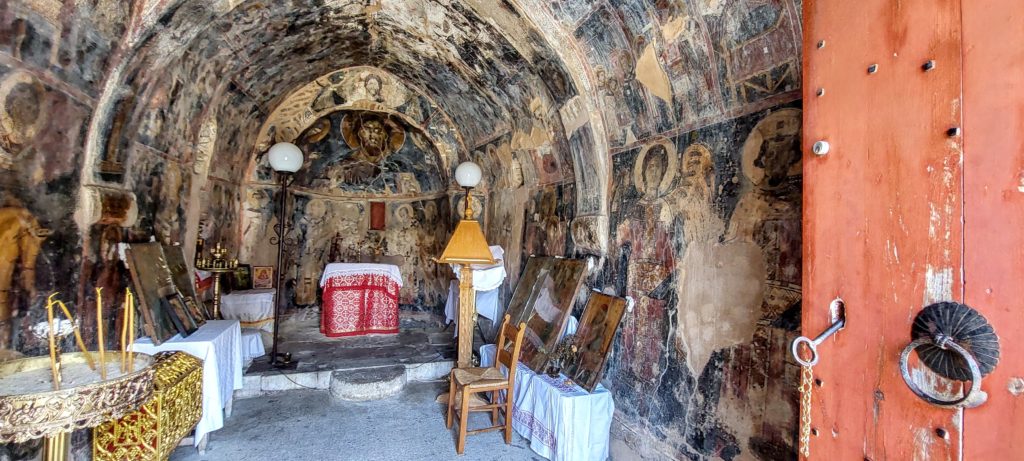
The works attributed to Pagomenos date back as far as 1324.
Such a rich display of historic art so well preserved for its age in such an unpretentious, out-of-the-way yet completely accessible setting is a remarkable find for aficionados of religious art.
As I contemplated what I’d just seen, seated on the edge of the tavern’s sun-soaked terrace, the church practically an arm’s length away, I ordered a thick, black traditional Greek coffee that got me started on lunch.

It was about 11:30 a.m. I had hiked up the mountain and was looking forward to a meal. Only a gangly gray-bearded man sat near me — he too was sipping Greek coffee while quietly fingering a rosary on the roadside corner of the terrace.
I saw another man who I surmised was Annie’s friend Kostas, the tavern owner and patriarch of the family enterprise that includes his wife, Volua, who cooks, and their son and daughter.
I introduced myself to Kostas and we chatted before I asked what he could serve me for lunch. He paused a moment before suggesting a Greek Salad and a dish of beef and potatoes. “Yes? he asked. “That will be good.”
I wasn’t about to quibble. I felt like I was entering a dream world of traditional, authentic Greek food, hospitality and ambiance.
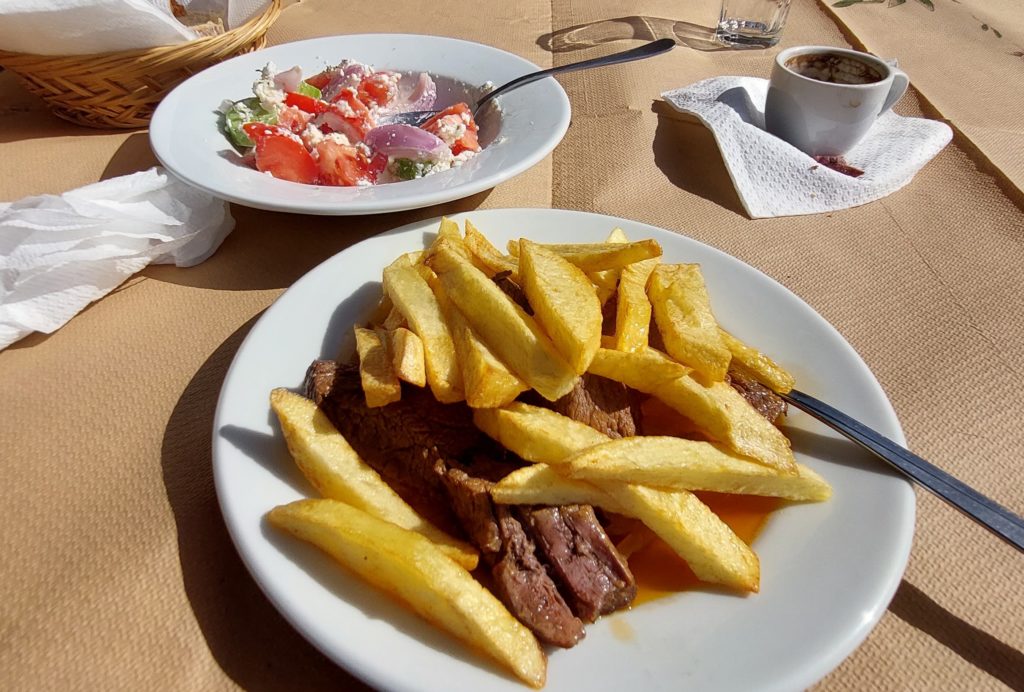
The next time I saw Kostas he was placing an ample salad of tomatoes, cucumbers, onions, olives and a cottage-style feta cheese in front of me that was superb, followed by a plate of succulent chunks of lean, tender, flavorful beef that must have just fallen off the bone onto the plate. Complementing the beef were strips of perfectly executed potato fries.
While eating, after Kostas had treated me to a taste of his house wine, I heard a distinctly mid-American voice coming from a table behind me so, before I left, I stopped to introduce myself to a pleasant traveler named Peggy, a retired banking executive from Michigan, who’d recently arrived in Greece to spend three months soaking up the rich culture of this beautifully hospitable country.

Peggy was dining with an expat couple of friends she’d just met, Charlotte, an American from California, and Chris, a gentleman from Great Britain.
Peggy had met the couple at a Greek church service only days before and her new friends wanted to introduce their new American friend to an authentic Greek experience without delay.
They couldn’t have taken her to a better place.
A Travel Tip
This story points to a travel tip, especially for solo travelers like Peggy and me. That is, not to be shy.
Meeting people and making friends around the world is the best part of travel, much more so than the actual places you go or things you see. And meeting fellow travelers from your home country is just as much fun in a foreign country as meeting travelers from foreign locales.
So whenever you can, smile, extend a hand (or these days, perhaps a clenched hand ready for a fist bump; I admit that part of the interaction can be awkward in these days of Covid, so prepare to react accordingly).
Then simply introduce yourself. Say where you’re from and that you like to meet people and make friends among fellow travelers. If you get that far you’re bound to find yourself in a conversation and end up exchanging contact info. So it’s good to carry a small notebook and pen with you just for these occasions, or to have handy supply of travel cards printed.
It’s really that easy, and the pleasure of making friends on the road is one that can last a lifetime.
Ah, the pleasures of art tucked away in unassuming structures… and I also grinned in memory of simple but delicious Greek meals. Will have to try the coffee next time!